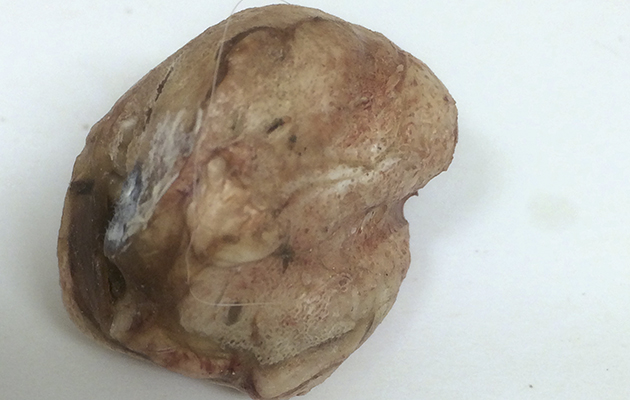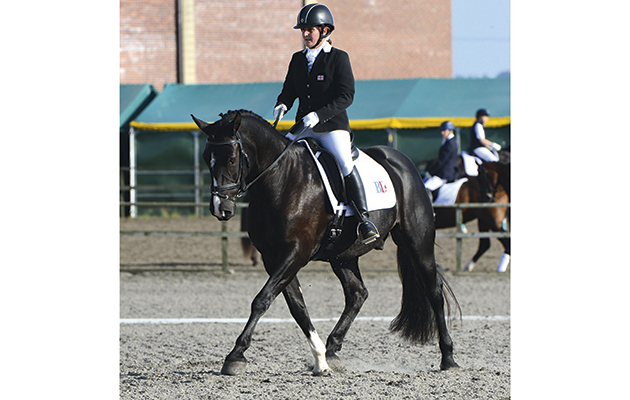There’s nothing too unusual about a photo of an extracted tooth on a vet clinic Facebook page. When that tooth has been taken out of a horse’s testicle, however, it makes for a much more interesting story.
Such was the case with coloured pony Crouton, who hit the headlines this summer after an unusual finding during a castration operation. Vets at Pool House Equine had noticed something amiss with the skewbald colt, one of three ponies rescued last year in a joint operation by the RSPCA and the Blue Cross.
“One of Crouton’s testicles felt very hard and was an unusual shape,” said Richard Stephenson MRCVS.
“We suspected that there was a tumour present, so he was booked into our clinic for castration under general anaesthesia.
“During the operation, an almost perfectly formed molar tooth was found in the centre of the testicle,” adds Richard. “The tooth is more properly called a ‘teratoma’ — a tumour that represents aberrant development of embryonic cells within the testicle.
“The teratoma was removed and Crouton recovered very well without further complications.”

Bizarre but benign
Peter Green MRCVS explains that teratomas occur in many animals — including humans.
“When these tumours are discovered, they often contain a weird assortment of structures – hair, bone, teeth, skin and even miniature organs, all encapsulated in an envelope of thick, fibrous tissue,” he says.
“They mostly originate from isolated ‘islands’ of germ cells that are misplaced during early foetal development.
“Usually, there is more than one type of germ cell together in the isolated teratoma seed,” adds Peter. “As the animal, or human, grows into adulthood, the microscopic bunch of multiple germ cells grows into the tissues that each germ represents.
“This could be enamel-producing tissue, making a bizarre tooth in some part of the body distant from the mouth; it could be skin germ cells, which then make a piece of skin complete with hair inside another organ, or bone germ cells, liver — almost anything.”
According to Peter, teratomas are usually benign and do not spread to other parts of the body.
“They can be problematic if they become very large, or if they are growing in an important place such as an ovary,” he adds.
“Horses can also develop another similar, but different, structure known as a dentigerous cyst. These always occur in the side of the skull, just below the ear, and contain a malformed tooth.
“Dentigerous cysts arise here because of a glitch with the development of the embryonic head. At a very early stage, the vertebrate embryo develops six pharyngeal or branchial arches — the first of which gives rise to the upper and lower jaws,” he explains.
“In horses, germ cells from a tooth from this first arch very occasionally end up at the wrong place in the skull. A tooth then forms where there should not be one.”
A surprise package
Sue Kiernan’s shire/anglo-Arab colt Wrekin Jack (Shad) was admitted to hospital for a rig operation when one testicle failed to descend.

“The second testicle was still in his abdomen,” says Sue, who adds that the gentle gelding, now eight, never displayed any rig-like behaviour. “When it was removed, the testicle was encased in a tumour that also contained a tooth.
“Removal of the tumour was pretty straightforward, but it was a bit strange,” she recalls. “The vets told me they’d never seen anything like it. Just about every vet student at the practice had
a good look at the tooth.
“Shad became quite famous — his case was even discussed at a local riding club veterinary lecture evening that I happened to go to,” added Sue, who has recorded a string of elementary British Dressage wins with Shad and is stepping up to medium.
“It was an expensive operation but Shad has been worth every penny.”
Ref Horse & Hound; 4 August 2016

